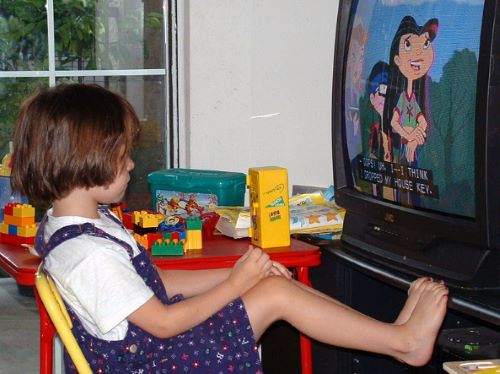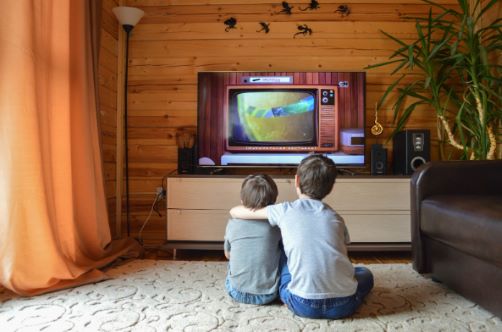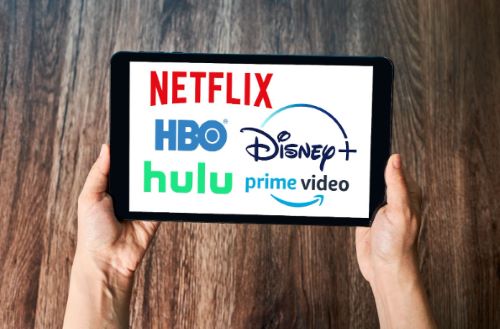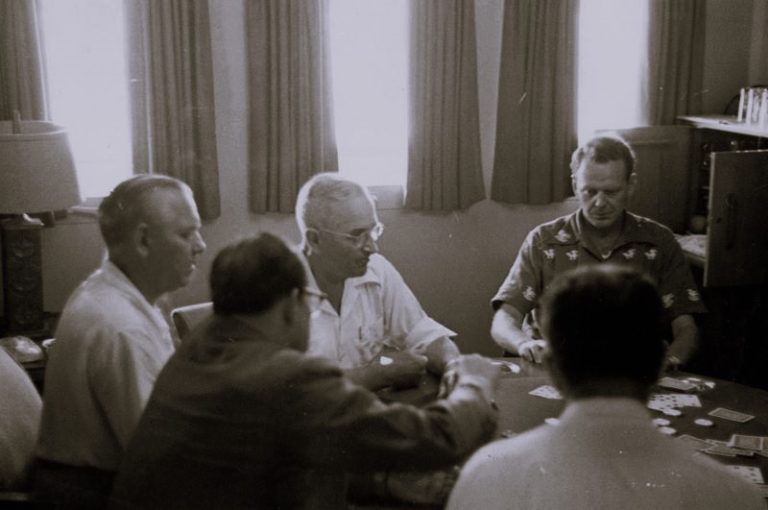

Many people watch high-quality movies and TV shows using a cable TV service. However, before the introduction of cable TV services, customers relied on line-of-sight airwaves for news and entertainment. Antenna TVs operate on airwaves through transmitters and receivers. Customers who had a building or mountain obstructing their view of the signal experienced poor reception. These poor reception issues were removed with the introduction of cable technology.
Around the 1950s, cable TV gained popularity. 1948 saw the majority of cable TV services being restricted to a few states’ local territories. From the 1950s through the early 2000s, cable programming expanded rapidly as the technology became more advanced and services more affordable.
In the 1970s, cable TV channels were introduced, and in 1996, cable broadband internet as well. Everything changed with the advent of high-speed, “always-on” cable internet. It sped up innovation in many different industries and opened up completely new markets. Just pause for a moment to consider how frequently you use the internet for daily tasks, and where you would be without it.
Currently, the global cable broadband market serves more than 200 million households. You probably don’t think much about what cable internet is or how it works, even if yours is one of them. The ability to learn and work from home, watch in 4K, book telemedicine appointments, play online multiplayer games, remotely operate our home security systems, and other things has made the internet a necessary component of today’s life.
The cable services enhanced their speed, capacity, latency, and other network performance indicators. The future super network can be constructed with the help of all these continuous advancements, cable’s wide network footprint, and its unshakable dedication to serving broadband consumers’ requirements.
Initially, cable used acquired off-net content almost exclusively to make up for lost programs and boost ratings. Cable TV services in the US brought in a new era of original TV shows, miniseries, and films in the 1990s. Soon after, cable programming began to successfully challenge broadcasters in obtaining both industry recognition and critical acclaim, as well as industry recognition.
How Cable TV Brought a Revolution
Many lives were altered in the past by the switch from the inconspicuous antenna to cable TV. This wasn’t a passing trend. These are five of the main reasons cable TV is still popular today.
The Technology Is Convenient
With the ability to watch beloved shows on demand, DVRs revolutionized the entertainment industry when they were first introduced. While today’s DVRs for cable TV can store hours of content, the first DVRs had stringent storage limitations.
Another fantastic thing about cable TV DVRs is that they provide you greater control. One phone call used to be enough to ruin an amazing TV-watching time. With the ability to pause and rewind shows on a DVR, you can receive phone calls easily.
Wide Variety of Channels
From basketball to boxing to tennis and athletics, it’s always easy to find a sports event on cable TV. There are multiple cable channels for sports including the CBS sports network, NBA TV, ESPN, ESPN 2, ESPN News, NFL network and MLB network.
When it comes to food, the Food Network and Cooking Channel offers you cooking lessons for thousands of recipes. Food Network Stars can be shown on the Cooking Channel and vice versa as these two networks are owned by the same company. Here are some Food Network-related interesting facts.
Future chefs should definitely check out Food Network, as it draws in a youthful audience. Furthermore, it encourages users to cook. The majority of channel viewers will visit the Food Network website at least once a month to look up a recipe.
When it comes to knowledge for kids, the Science Channel has transformed the lives of numerous kids. Children who watch this channel learn fascinating things about commonplace items and experience new worlds. Teaching with television shows can be an excellent method of promoting learning.

Kids get a lot from watching game programs on cable TV. There were just two options available to young kids prior to cable TV – School and the library. Game shows on cable TV are entertaining and instructive. It’s like a protection shield for most parents. Channels like Disney, Nickelodeon, and Cartoon Network make watching TV fun and entertainment for not only kids but the entire family.
Monopoly of Cable TV
From the early 1980s to the 1990, most industry experts believed that cable television operated as a monopoly in a way that was harmful to consumers. Except analog “rabbit ears,” which lacked cable’s entire channel selection and quality, there weren’t many rivals to cable television.
There were few other cable companies available to subscribers in many places where a single provider controlled the market. Nonetheless, the market evolved in the Internet era. There are various other media consumption outlets that challenged cable television, the internet being the most prominent.
Satellite TV players offered some competition to cable TV services. The majority of high-speed Internet users obtain their connection via the cable firm, which provides funding for cable TV indirectly.
Challenges from Satellite and Digital Technologies
As technology advances, the experience of viewing television is changing quickly. Viewers are now free to watch anything they want, when they want to watch it, and are not constrained to a TV schedule or a small selection of network television stations.
People’s viewing habits are shifting as a result of non television delivery technologies like the Internet, which allows users to download regular TV programming onto a computer, laptop, iPod, or smartphone.
Meanwhile, prime-time viewership is evolving as cable and satellite companies allow customers to purchase TV series to watch whenever it’s convenient for them via video-on-demand services. To achieve a similar result, consumers can record shows onto the memory of their devices using digital video recording (DVR) systems.
What is Satellite TV?
Satellite TV brings television content straight to your house through the use of satellite technology. It is available in remote locations and provides a large selection of channels. But weather can have an impact on it, and installing a satellite dish might be necessary.
A wide range of channels, including specialty and foreign programming, are available via satellite TV. Because of its countrywide coverage, it may be accessed in isolated and rural locations. Access to premium material and special sports packages is another benefit of satellite TV.
Cable TV Vs. Satellite TV
While cable TV may have higher base prices and extra costs for premium channels and equipment rental, satellite TV frequently offers comparable pricing with a variety of package options.
When evaluating expenses, it is important to take into account contract terms and promotional offers.
A greater selection of channels, including specialist and foreign programming, are usually available on satellite TV. Sports bundles and exclusive material can be available. On the other side, cable TV frequently offers bundled services with internet and phone, as well as local channels.
HD visual quality is available on both cable and satellite TV. Superior image quality is offered by 4K Ultra HD resolution, which is another option offered by satellite TV. Depending on the channels and audio equipment used, the two options often have similar sound quality.
Because satellite TV is more portable, it is a good option for people who travel frequently or own second homes. In rural locations without cable infrastructure, it is accessible.
The Rise of Streaming Services

Netflix was the first, offering thousands of hours of high-quality TV shows and movies for a single monthly fee. It quickly became clear that normal, ad-supported TV was not necessary if you had a streaming subscription. You can watch as much video content as you like if you have a computer, phone, or smart TV.
Tens of thousands of people are currently terminating their traditional cable TV subscriptions. “Cutting the cord” refers to this trend as well; the coax cable is what sends video from your cable box to your TV.
An Innovation in Video Consumption
There have been multiple paradigm shifts in media content. Radio was replaced as the leading form of entertainment in the 1950s by network TV. Cable TV spread widely and added numerous new channels in the 1980s. Online streaming services like Disney+, Apple TV+, Peacock, HBO Max, and YouTube, Netflix, and Hulu are just a few of the many new services that are being used to enjoy video these days.
Also, the availability of easy to use streaming devices like Google Chromecast, Amazon Fire Stick, and Fire TV boxes brought home entertainment at our fingertips. Among these devices, Firestick is very easy to use as it comes with instructions to complete setup within a few minutes. Consumers are adopting these streaming devices and technologies for easy access to entertainment content from the comfort of their home.
Adopting any technology involves a learning curve. However, the development of streaming content during the past five years can be seen as a natural consequence of the ubiquitous availability of internet access. You can connect to the internet and the gadget using wireless internet to your phone or high-speed internet to your house or place of business. Streaming providers just needed to get the content ready.
The Future of Cable TV
The future of cable and satellite TV is unsure, yet obviously streaming services will keep on assuming a significant part. Experts predict that the number of cord cutters will increase, and that streaming services will keep on filling in fame. To rival streaming services, cable and satellite television suppliers will probably need to make a few changes.
The ascent of streaming services is likely to affect the overall media consumption. As more and more individuals are shifting to streaming services, conventional TV services and film studios might need to adopt streaming models as well.
Conclusion
Web-based streaming services significantly affect the cable and satellite TV business, and this pattern is probably going to go on. As an ever-increasing number of users are shifting to go to streaming services, cable and satellite TV suppliers need to find ways of adjusting to the trend. The rise of streaming services is additionally liable to affect the general media consumption. It’s an interesting time for the TV industry, and we’ll need to sit back and watch how things evolve.


